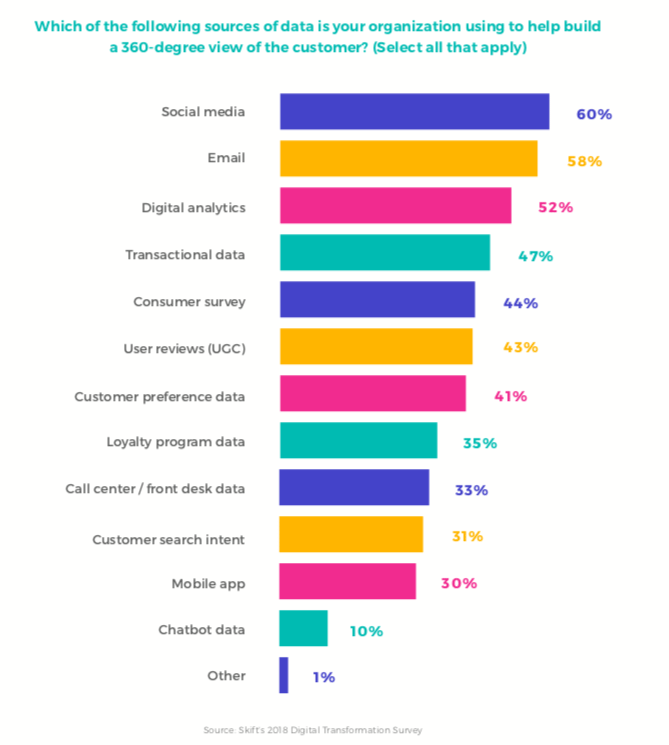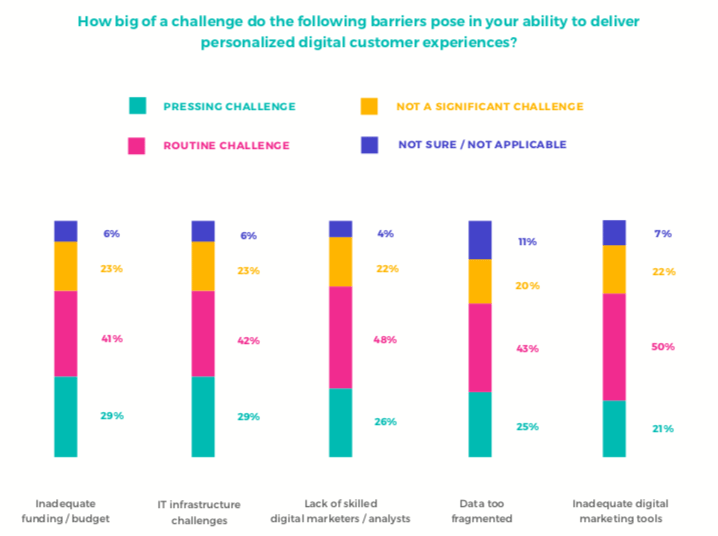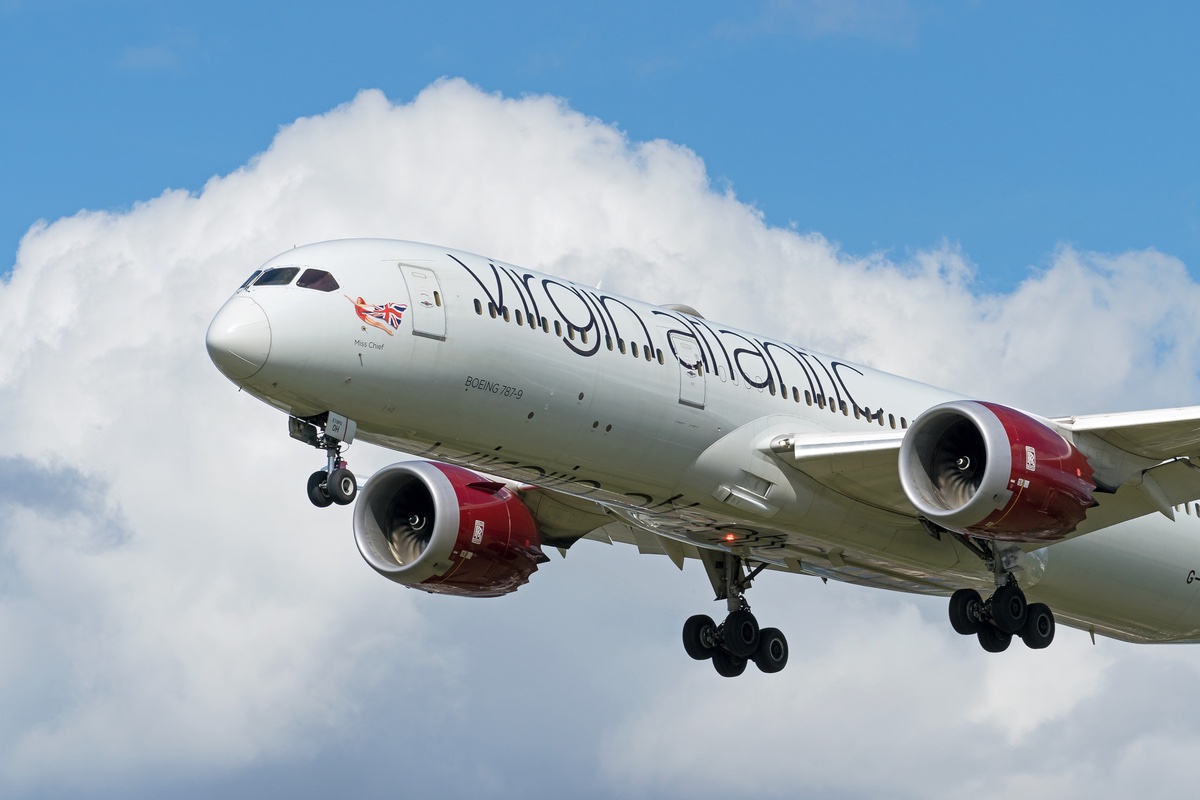Understanding Travel’s Personalization Revolution

Skift Take
This sponsored content was created in collaboration with a Skift partner.
Personalization is the name of the game in 2018 when it comes to the travel customer experience. Thanks to a growing volume of data collected from every customer touch point, and increasingly advanced analytics, today’s travel brands have all the information and tools they need to make their products and communications more meaningful than ever before.
Today, travel executives realize, building more relevant and personalized customer experiences is critical because it helps differentiate their brands in an increasingly competitive market. “It’s becoming harder and harder to stand out,” confirmed Loni Stark, senior director of strategy and product marketing at Adobe, in an interview with CMO.com. “Many brands are setting the bar higher by engaging with customers on a personal level with content and messaging that is personalized, relevant, and more likely to garner engagement.”
Despite this, many travel brands still struggle to meet the personalization demands of consumers. Consider that in Skift and Adobe’s 2018 Digital Transformation Report only 36 percent of travel executives rated their company’s current personalization efforts as a four or five on a scale of one to five. The challenge is further illustrated by the results of a survey published at Adobe’s North American 2018 Summit, in which consumers were asked to rate various digital experiences based on what they expect versus what impresses them. The survey confirmed that younger travelers view personalized experiences as an expectation when choosing their favorite travel brands. “Millennials in the 25 to 34-year-old demographic are less likely to be impressed versus having an expectation around travel experiences,” said Julie Hoffmann, Adobe’s head of industry strategy for travel. “These global travelers are setting the bar as they move into the primary travel demographic over the next 10 years.”
How much progress have today’s travel businesses made to personalize the products, services, and content they offer to consumers? And what best practices will they need to adopt in the near-future to make their personalization goals a reality? Below is a roadmap to personalization success, informed by the results of Skift and Adobe’s 2018 Digital Transformation Report.
Identify and Utilize the Right Data
Good personalization starts with good data. “Garbage in, garbage out” is a useful principle when thinking about what kind of information marketers should rely on for personalization. But what sources of data are highest quality? And how should they make use of it? “It is clear that travel brands are swimming in a sea of data, but accessing the right data to inform personalization is still a challenge,” acknowledged Adobe’s Hoffmann.
To start, a strong personalization strategy should rely on a mix of first-party data (the information a company can gather from its own websites, social media activity, and mobile apps) and third-party data from outside sources such as Facebook news feeds and search behavior. “You’ve got to provide first-and third-party data and mix in additional intelligence from areas, such as machine learning and AI, to find a whole new level of personalization,” TTEC’s Jeff Marcoux advised at a recent conference.
The results from Adobe and Skift’s survey of travel marketers, illustrated below, provide additional direction on which first-party data sources are considered most valuable. 60 percent of marketers said they already use social media data to build a fuller perspective of customers. Email was the second-most common, with 58 percent of marketers using it, followed by digital analytics at 52 percent and transactional data at 47 percent. Consumer surveys rounded out the top five at 44 percent.

Use Technology to Deliver Rich Personalized Experiences at Scale
Once travel companies gather the right data, the next step is to select and use the right technology tools to implement personalized experiences throughout the customer journey. The first step is linking together existing technology and databases into an integrated technology “stack.” Without this holistic view across various internal systems and databases it’s much harder to deliver personalization throughout the entire customer journey and all its touchpoints. “Top performing companies are three times more likely than their peers to have invested in an integrated, cloud-based technology stack,” noted Hoffmann during the Travel & Hospitality Super Session at the Adobe Summit.
The next step when deploying technology is determining how and where to distribute more personalized interactions over the course of the customer journey. And on this point, today’s biggest area of opportunity to personalize is during the customer journey. “Delivering on personalized experiences during the journey, versus a pre- or post-trip communication cycle, becomes the backbone of meaningful connections that can transcend competitive forces,” said Hoffmann. Mobile app experience analytics is one technology solution that will be critical for travel marketers as brands look to mobile devices for ways to personalize the in-trip experience for travelers.
Delta is one travel brand that is continuing to evolve its personalization efforts with the aid of technology. The airline launched a customized email marketing campaign in 2016 that sent hundreds of thousands of personalized videos to its Medallion loyalty members, identifying customer data points to inform its content creation efforts. The resulting click-through rate was 500 percent above benchmark. As the company’s personalization technology efforts have continued to improve, Delta has been able to extend its customization into the in-trip interactions as well. For example, Delta recently started to equip flight attendants with a mobile seat-recognition tool that helps them quickly identify high-value corporate passengers and provide a more personal interaction during their flights.
High-end alternative accommodations brand Onefinestay is another example of a brand using technology to deliver hyper-personalized interactions for guests. In fact, as the company’s chief executive believes, the next stage of travel personalization will focus on exceeding guests’ expectations by delighting them and bringing them joy. “New luxury is no longer about products. It’s about hyper-personalized experiences that have a very meaningful and memorable impact in our guests’ minds,” said Onefinestay CEO Javier Cedillo-Espin in an interview with Skift. “It’s about creating and finding those moments of joy for the guest that helps us build that higher level of living.
As technology becomes more critical to the personalization process, marketers also shouldn’t lose sight of the human touch. As Lilian Tomovich, chief marketing officer of MGM Resorts International, recently said: “Experience needs to be delivered by real people, and technology needs to be the enhancer.”
Hire and Train for a Personalization Future
Smart use of data and technology are important. But it’s also worth noting that they can fall flat if team members don’t have the technical skills to extract meaningful insights that lead to better personalization. In fact, in Adobe and Skift’s Digital Transformation survey, 74 percent of respondents said that “lack of skilled digital marketers/analysts” was a “pressing” or “routine” challenge in the upcoming year.

That’s why according to data presented at the 2018 Adobe Summit, today’s top-performing brands are twice as likely to be investing in digital skills and education. “Those organizations that put the customer first and utilize a cross-team approach to enable personalization are also twice as likely to have exceeded their top business goals from last year by a significant margin,” said Hoffmann.
Ryanair is one example of brand that’s focusing on smart hiring and training to drive its personalization strategy. The airline has hired hundreds of IT and data analytics specialists to better parse its travel data, with a goal of offering personalization at the scale of retail e-commerce giants such as Amazon. “This has transformed retail and it’s going to transform airlines,” Ryanair’s Kenny Jacobs told Skift.
Key Takeaways
It’s clear that today’s travelers increasingly expect and demand personalized experiences. That’s why marketers have no time to waste in adapting their strategies to provide tailored services across the entire customer journey. Here are a few takeaways to help inform next steps:
- Data, technology and people are the three linchpins of a successful personalization roadmap.
- Personalization can help brands stand out and improve audience engagement: The majority of customers want companies to use the data they collect to tailor their messaging and services.
- Good data is a key driver of personalization: Combine first and third-party data to have a fuller understanding of the customer. Leverage sources such as call centers and mobile app data to differentiate from competition.
- Personalization should balance technology with the human touch: Technology is there to enhance the experience, but it can’t replace the connection established by human interaction.
This content was created collaboratively by Adobe and Skift’s branded content studio SkiftX.




